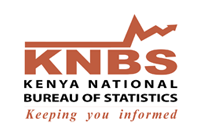Balance of payments estimates for the second quarter, that is April to June 2018 are presented in Table 1. Current account deficit narrowed to KSh 85.8 billion, in the second quarter of 2018 from KSh 130.4 billion in the second quarter of 2017. The net surpluses in the service and secondary income accounts contributed significantly to the narrowing of the current account deficit. The current account deficit was primarily brought about by larger increases in merchandise imports relative to exports. Merchandise imports valued on free on board (fob) basis grew by 7.6 per cent to KSh 437.1 billion while merchandise exports increased by 6.3 per cent to KSh 159.6 billion in the second quarter of 2018. Consequently, international merchandise trade balance deficit worsened by 8.3 per cent to KSh277.5 billion.
International trade in services inflows increased by 10.1 per cent to KSh 136.2 billion while outflows went up by 13.3 per cent to KSh 99.1 billion. In the secondary income account, remittances by Kenyans employed in the diaspora amounted to KSh 74.7 billion in the second quarter of 2018 from KSh 47.6 billion in the corresponding quarter of 2017.
The financial account net inflows declined to KSh 18.8 billion in the second quarter of 2018 from KSh 140.8 billion in the second quarter of 2017. This was on the back of decreased inflows coupled with increased debt securities outflows mainly in portfolio investments and other investments categories. In the second quarter of 2018, there was net use up of KSh 41.1 billion to the foreign exchange reserves. Gross official reserves stood at KSh 904.8 billion as at end of June 2018 from KSh 889.7 billion as at end of June 2017. Overall balance of payments position during the quarter review recorded a deficit of KSh 33.6 billion.Quarterly Balance of Payments Second Quarter, 2018
